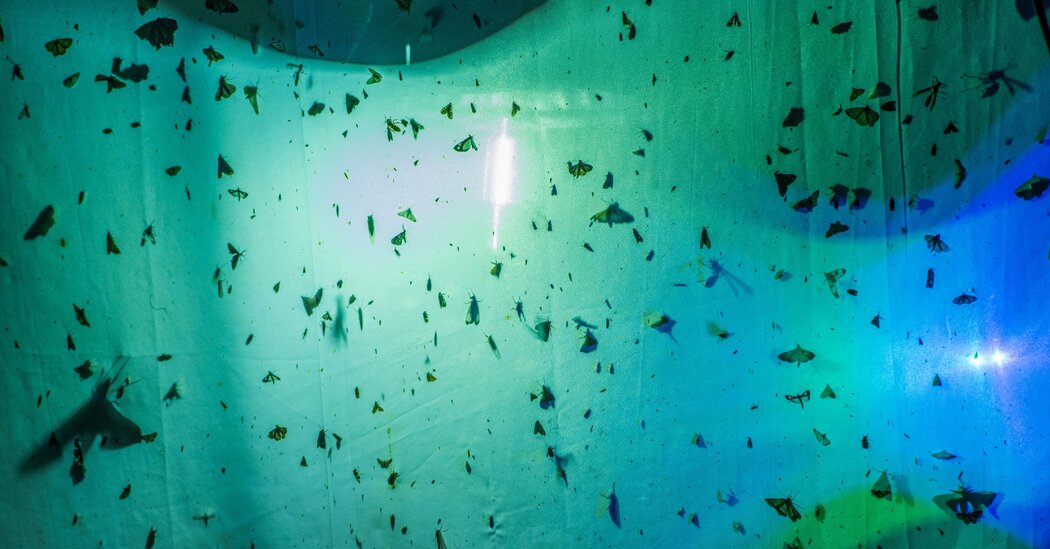Over time researchers have found fewer of the insects turning up in light traps, suggesting they may be less attracted to some kinds of light than they once were.
It used to be that you could put a black light at the edge of a cornfield at night and expect a bountiful harvest of moths the next morning. For entomologists, such light traps have provided an invaluable record of moth numbers. But in recent decades, light traps have shown dwindling catches of insects of all kinds. Some have interpreted these empty traps as evidence of a documented decline in insect numbers around the world.
But there might be other factors at play. In a paper published on Friday in the Journal of Insect Conservation, researchers report that while some light traps show declining numbers of corn earworm moths, a well-known agricultural pest, their catches in another kind of trap are as healthy as ever. The results suggest that something has changed in the moths’ attraction to light.
From the very beginning of the study of evolution, entomologists have wondered about moths’ tendency to fling themselves at light sources. That included Roland Trimen, who wrote to Charles Darwin to ask how he explained moths’ unhealthy obsession with flames.
“Darwin was like, ‘Very true, maybe it’s because lights are quite new and moths haven’t quite figured it out yet,’” recounted Avalon Owens, an entomologist at Harvard and an author of the new paper. “But you might expect that over time they will stop doing this. He literally put that out there 150 years ago, and everybody just sort of forgot.”
The fact that natural selection might punish the very behavior scientists used to track moths made Dr. Owens wonder: Were there any tracking programs that used more than one kind of trap?
She discovered that a handful of farms in the United States used both light traps and pheromone traps, baited with a hormone produced by female moths, to keep an eye on levels of the corn earworm moth. She and her colleagues analyzed the number of moths that were caught in each kind of trap over the years, with the longest records, from Delaware, stretching back 25 years.
